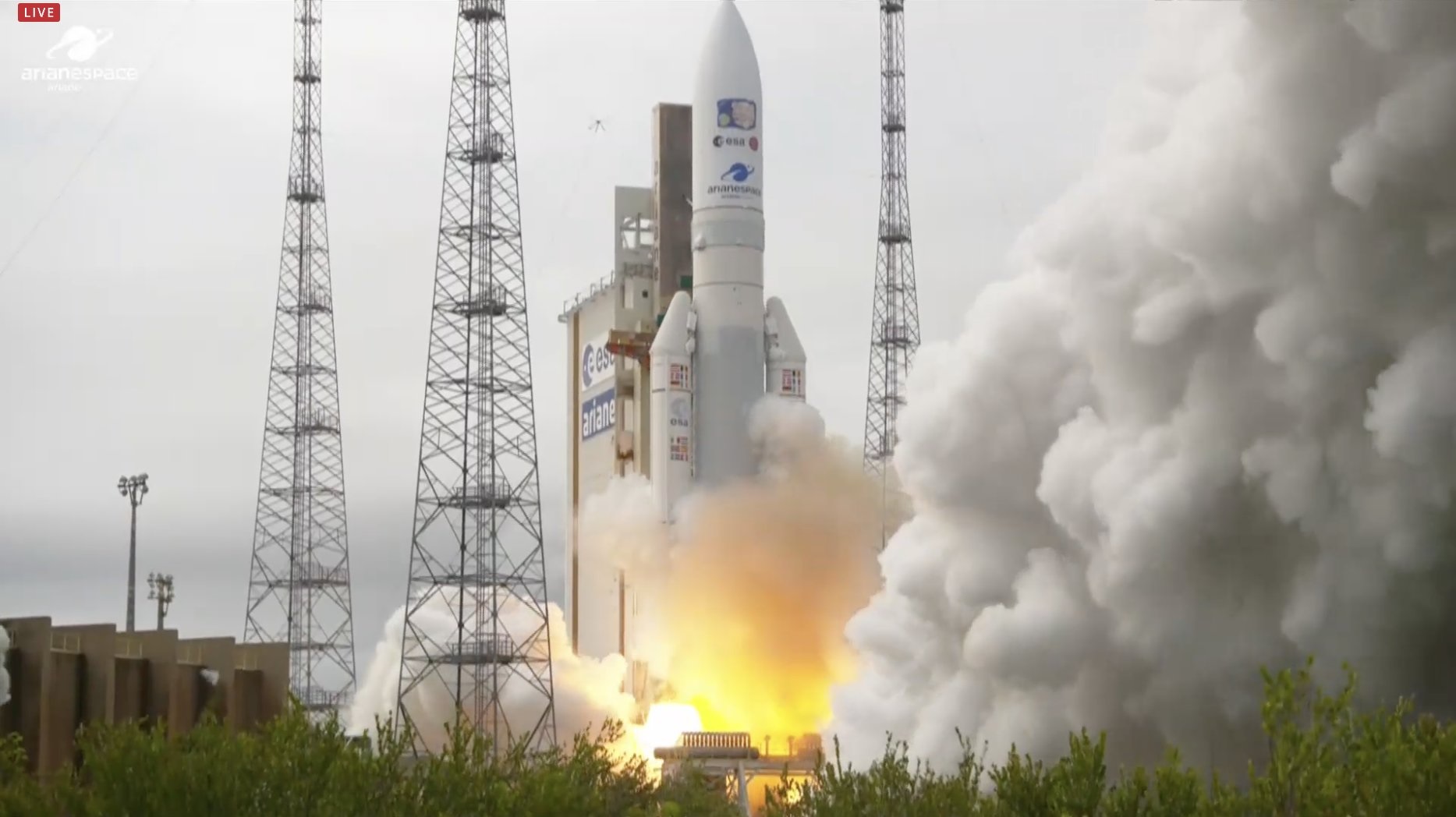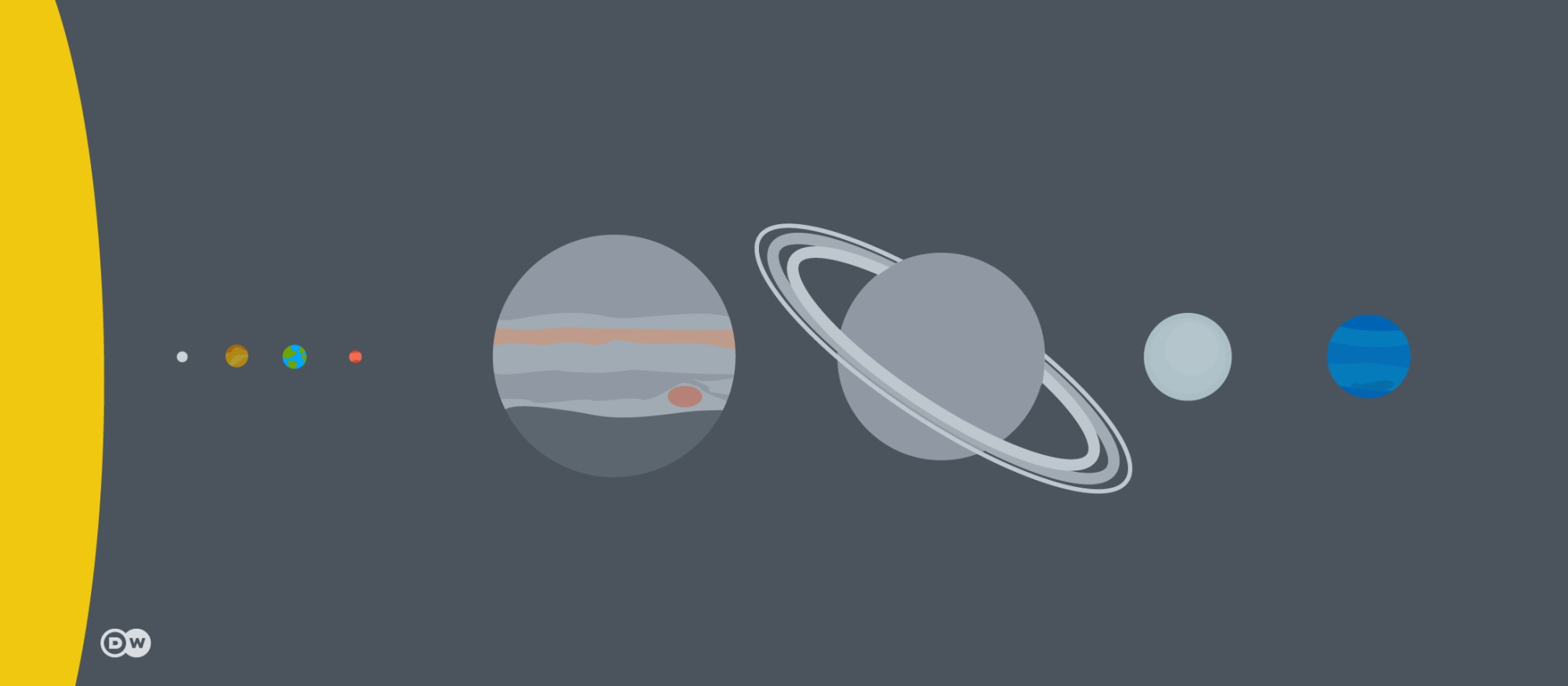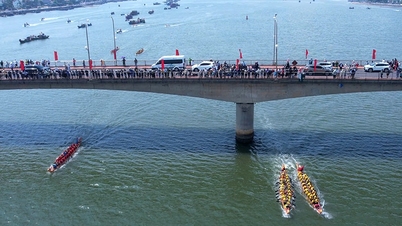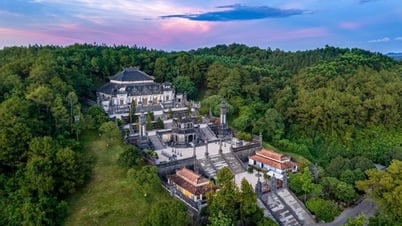The Juice spacecraft, or Jupiter's Icy Moon Explorer, is the largest planetary mission to date. It contacted ESA's main mission control center in Darmstadt, Germany less than an hour after launch.

The Ariane rocket carrying the Juice probe lifted off from Europe's Spaceport in French Guiana on Friday. Photo: ESA
The spacecraft will explore Jupiter's complex environment and shed light on whether life could exist on its three moons. Stephane Israel, CEO of Arianespace, the company in charge of the Ariane 5 rocket for the launch, described it as a "perfect launch".
When Juice separates from the Ariane 5 rocket less than half an hour after launch, ESA will take control of the spacecraft. Juice’s 85-square-meter solar array, the length of a basketball court, will unfold to capture as much energy as possible.
It will take 17 days for Juice’s antennas and probes to be deployed. Only then will Juice begin its eight-year journey to the solar system’s largest planet, some 628 million kilometers from Earth. Juice will reach its final destination, Jupiter, in 2031.

Jupiter is the largest planet in the solar system. Photo: DW
More than 400 years ago, astronomer Galileo Galilei discovered four moons orbiting Jupiter - the first natural satellite discovered orbiting a planet other than Earth.
Three of the four Galilean moons – Ganymede, Callisto and Europa – are thought to have vast oceans of liquid water beneath their icy surfaces. This has made Jupiter’s icy moons prime candidates in the search for extraterrestrial life.
“Detailed studies of this gas giant and its moons will also help us understand other planets in the universe,” said Professor Mark McCaughrean from ESA’s senior advisory group.
Bui Huy (AFP, DPA, DW)
Source



![[Photo] Prime Minister Pham Minh Chinh chairs conference to accelerate disbursement of public investment capital, deploy key projects and eliminate temporary and dilapidated houses](https://vphoto.vietnam.vn/thumb/1200x675/vietnam/resource/IMAGE/2025/6/23/fcb205e3ca19432eac326f55123308f4)
![[Photo] Prime Minister Pham Minh Chinh chairs national online conference on new rural construction and poverty reduction](https://vphoto.vietnam.vn/thumb/1200x675/vietnam/resource/IMAGE/2025/6/23/0d239726be21479db1ea6d8d77691a6d)


![[Photo] General Secretary To Lam works with the Party Committee of the Fatherland Front and Central organizations](https://vphoto.vietnam.vn/thumb/1200x675/vietnam/resource/IMAGE/2025/6/23/a252b388e91447ac8fabf948c00f2a21)






























































![[Infographic] Party Committee of the Ministry of Culture, Sports and Tourism: Marks of the 2020 - 2025 term](https://vphoto.vietnam.vn/thumb/402x226/vietnam/resource/IMAGE/2025/6/22/058c9f95a9a54fcab13153cddc34435e)


























Comment (0)